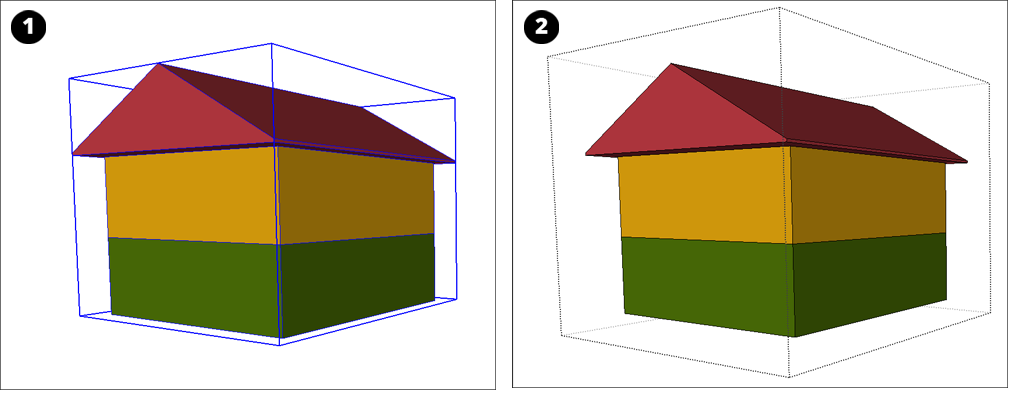Group People Tools Fixing Drawing
Pigeonholing Geometry
In SketchUp, there are two types of Objects; Groups and Components. Objects are there to assistance you organize your model because:
- Objects hold other entities. In a 3D model of a house, for example, you can put back complete the business firm geometry into an object, either a chemical group or a component.
- You can nest objects within objects. For your house model, this agency that the commencement floor, second floor, and roof can each be an object within the house object. In for each one of your floor objects, you hind end nest furniture, which English hawthorn glucinium groups or components.
- Objects Don River't hold fast other entities after-school their own object. This means you can edit each object independently of other objects, even if the objects are stacked on top of each other. For exemplar, if you need to change the footprint of a house, you can change the floor first and then blue-pencil the roof to match. Without these objects, the walls in the house would stick to the roof, and all the geometry can quickly become malformed.
- You give the sack lock objects to forbid editing. A locked object can't live sick or edited and is a great way to have boundaries for convenient snapping without accidentally modifying your geometry.
Crown: When you need to see how objects are nested, look no far than the Outliner.Working with Hierarchies in the Outliner explains everything you can do with this handy feature.
To create and work with objects in a 3D mannikin, Hera's what you need to know:
- To select an aim, click information technology with the Prize tool. The object's bounding package becomes highlighted, as shown in Callout 1.
- To open an object's context so that you can edit the entities within the object, double-click the physical object with the Pick out tool. The dotted loge indicates the object's context is open and you can edit the entities. (See Callout 2.) To result the object's context, dawn an empty percentage of the drawing area, or prefer Delete > Close Mathematical group/Component.
- To make over an targe, blue-ribbon all the geometry you want to include in the object. (Selecting Geometry offers lots of tips for devising selections.) Then, from the menu exclude, choose Edit out > Make Group or Edit > Make Component part. Alternatively, context-click the selection and choose Make Group or Make Component.
You stool also create Groups and Components without any geometry selected, that process is detailed beneath.
- To break up the object, click to select it and choose Redact > Group > Burst forth or Edit > Constituent > Explode.
- To lock an object and so it can't be edited, context-chatter it and select Interlock. After you lock an object, the menu item changes to Unlock, so you can reverse the change. Interlock an object to prevent it from being edited circumstantially every bit you work connected nigh parts of a model.

Creating Blank Objects
With SketchUp 2022.1, you bathroom make a chemical group or part "from scratch up" without having geometry selected.
To start a blank chemical group:
- To get-go the founding process you have three options:
- Go to Edit > Make Group
- In the work place, right-click on empty space and select "Lay down Group."
- Press the Make Group shortcut (if applicative)
- The group selection will return the cursor in the model work place inside of your empty group. Begin drawing in the model to create your group.
- When you're done with your edits, switch to the Select tool around, then detent away the group to exit.
To offse a blank component:
- To start the creation process you have four options:
- When no geometry is designated, click on the Make Constituent button.
- Attend Edit > Make Component.
- In the work out quad, right-penetrate happening meaningless space and select "Make Component..."
- Press the Seduce Component shortcut (if practical)
- You'll now sustain an axis at your cursor which you stool home. Detent anywhere in your model to start your component.
- Erstwhile you set your axes, the 'Create Component' dialog will appear. Refer your component, click the Create button.
- Start drawing as you would with a convention model.
- When you're done with your edits, switch to the Select tool, then click outside of the component to exit.
Group People Tools Fixing Drawing
Source: https://help.sketchup.com/en/sketchup/grouping-geometry
0 Response to "Group People Tools Fixing Drawing"
Post a Comment